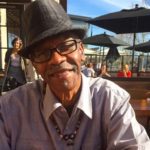One of the few men ever to escape San Quentin State Prison walked out legitimately this time, after a long stint in the same prison. In 1974, Watani … [Read more...]
Archives for February 2015
S.Q. Inmates Lend a Hand To NorCal Special Olympics
Inmates inside San Quentin State Prison are currently supporting the Special Olympics Northern California Program and looking for more ways to do … [Read more...]
Searching for Fungus
At a cost of $5.4 million, state prison officials have conducted a voluntary screening of California inmates to find out who has been exposed to the … [Read more...]
California’s Recidivism Rate Declines In the Three Years Since Realignment
A recent study finds that the number of inmates released from state prison in California and returned to custody has declined since the implementation … [Read more...]



